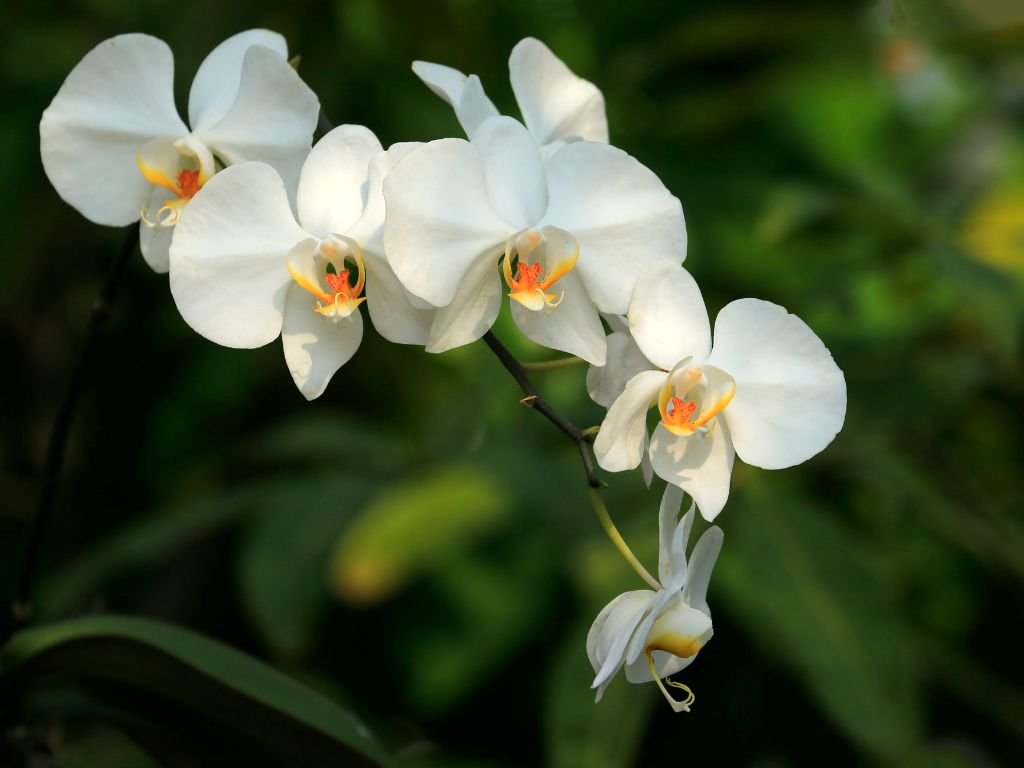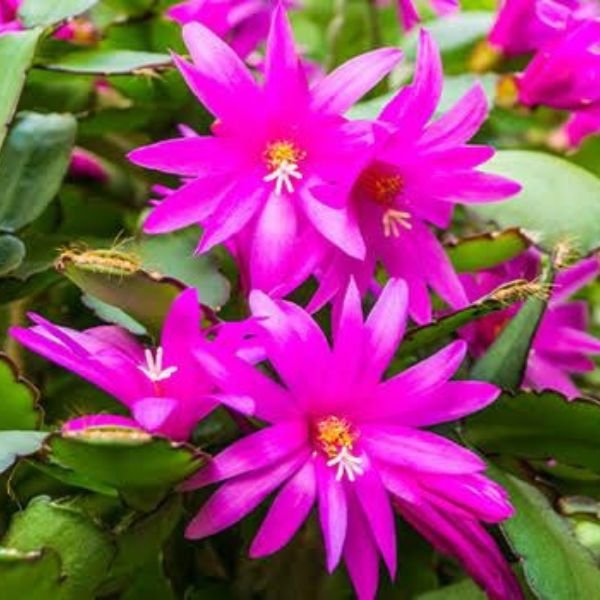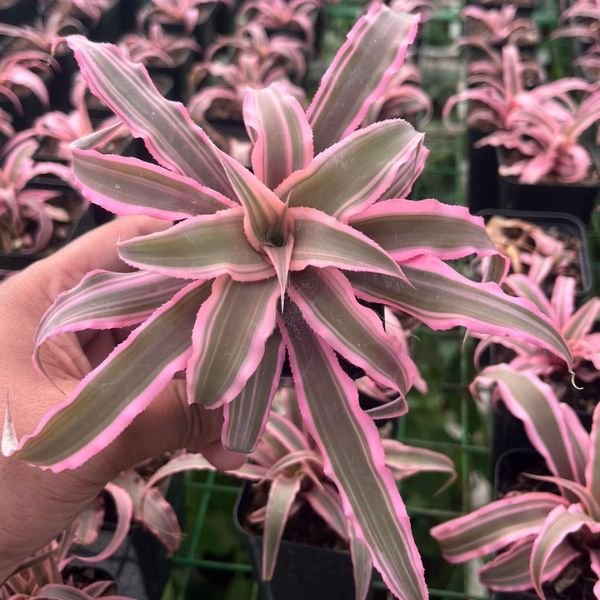Phalaenopsis comes from South-East Asia and the Philippines and is known as the \”Moth Orchid\’\’ with wide popularity as a houseplant. It is a non-toxic orchid that produces large wingy flowers on a long stem. Phalaenopsis is the most long-lasting flower among other orchid species. They create a mesmerizing display with their dark green foliage. They are the perfect fit for any indoor, office section, or shaded garden. Phalaenopsis are available in both one and multi-spotted red, violet, and blue-shaded appearances. After the dropping of Phalaenopsis, their growth starts in summer. With the combination of the low temperature of early fall, these orchids bloom in the winter or spring. The easy-to-care quality is the other specialty of these orchids. Phals bloom once or twice a year and their blooms last up to 4 months.
Phalaenopsis Temperature Requirements
Phalaenopsis orchids need the warm temperature to flourish. The perfect daytime temperatures range from 21°C to 27°C. The night temperature should not be below 16°C is considered. The well-lighted indoor is perfect for growing Phalaenopsis. These orchids can not tolerate extreme cold and frost.
Phalaenopsis Watering Requirements
Maintaining the amount of water creates a great impact on Phalaenopsis orchids. Morning watering is always good for these orchids. It\’s important to keep the potting medium moderately moist. Watering can be varying every other day to weekly depending on the potting medium. If you are using moss, consider less watering than bark because moss retains water. Never water the center of the orchid and other parts except for the roots. Before giving water, let the potting medium completely dry out. Do not use directly distilled water. Phals don\’t like to be soggy because it will make the roots rot.
Phalaenopsis Light Requirements
Phalaenopsis orchids prefer warm temperatures. But not direct sunlight as it can damage their delicate leaves. It\’s important to choose a bright location for your orchid, as indicated by bright green leaves. Insufficient light can cause leaves to turn dark or yellowish-green. Phalaenopsis can tolerate low light conditions. The other is that they cannot survive in extremely low light conditions. If you don\’t have enough natural light, you can supplement with artificial light sources such as fluorescent tubes or LED. During winter, Phalaenopsis requires a minimum of 10 hours and 13 to 16 hours of light to grow properly. Indirect bright light from east or south-facing windows is ideal for Phalaenopsis.
Phalaenopsis Humidity Requirements
Phalaenopsis orchids like to be placed in a humid environment. It\’s important to maintain a humidity level of 50-80% around them. Air conditioners can dry out the air, which isn\’t good for these plants. Use a humidifier or a humidity tray filled with water and pebbles to increase humidity levels. However, misting the leaves with a spray bottle isn\’t recommended, as this can cause problems. If you choose to mist, be sure to dry the water off the leaves with a cloth to prevent any issues.
Potting and potting media of Phalaenopsis
For Phalaenopsis orchids, it\’s important to avoid using regular soil as it won\’t provide the necessary nutrients and drainage. Instead, opt for a specialized potting mix that\’s designed for orchids. These orchids are best planted in small pots at first. They should be repotted every two years. To create a suitable potting mix, you can blend a variety of materials such as bark, charcoal, perlite, coconut husk, or sphagnum moss. For optimal results, consider mixing both sphagnum moss and bark. To keep a close eye on the health of your Phalaenopsis orchids, it\’s recommended to use clear plastic pots for planting. This allows you to easily observe the condition of the roots and make adjustments to your potting and care techniques as needed.
Fertilization of Phalaenopsis
By providing your Phalaenopsis orchids with appropriate fertilization, you can ensure that they continue to produce vibrant blooms and remain healthy over the long term. Follow a schedule to ensure they receive the nutrients they need to thrive. You should aim to fertilize Phalaenopsis once or twice a month using a balanced water-soluble fertilizer that contains nitrogen, phosphorus, and potassium in a 20-20-20 ratio. During the winter months or after your Phalaenopsis orchid drops its blooms, you can adjust your fertilization schedule to once a month. However, during the growing period, it\’s recommended to increase your fertilization frequency to twice a month to support healthy growth and development.
Repotting of Phalaenopsis
Choosing the right time and identifying the signs of repotting phalaenopsis are necessary. The best times to repot your orchids are in the spring or fall. Signs of repotting include roots that have outgrown their pot or improper drainage that can lead to root rot. Always select a pot that\’s slightly larger than the previous one to give the roots room to grow and breathe. Here are steps to repot your orchids:
- Carefully release the orchid from its previous pot and trim away damaged rotted and brown roots.
- Put the orchid into a large container using a bark medium to promote improved airflow throughout the root system.
- Spread out the plant roots and fill the remaining space with the potting medium and thoroughly water your newly potted phalaenopsis orchid.
You can help ensure that your Phalaenopsis orchid remains healthy and continues to thrive in its new pot after following these steps.
Pruning of Phalaenopsis to promote rebloom
To promote reblooming, use clean pruning shears to cut the stem of your Phalaenopsis orchid back to one inch above a brown circular node. Pruning encourages new stem growth and blooms. Remember to prune dead stems and roots for better overall health. If your orchid still has healthy blooms, stop pruning until they fall off. To ensure new growth, cut down brown that will not produce new flowers.
Pest and diseases of phalaenopsis
Phalaenopsis orchids are prone to pest infestations and diseases, which can harm their health and appearance. Common pests that attack these plants include mealybugs and spider mites, leading to discolored foliage. To tackle mealybugs, a homemade pesticide or rubbing alcohol can be applied. Bacterial infections and brown spots are also possible issues that can arise while growing these orchids. Among the most frequent problems experienced by Phals is bud blast. This is caused by unfavorable growing conditions, such as overwatering, exposure to extreme temperatures, and lighting.
Other details about Phalaenopsis
Before purchasing a Phalaenopsis, it\’s important to check for healthy leaves, roots, and overall appearance. While most Phalaenopsis are not fragrant, Phalaenopsis bellina is known for its pleasant scent. Phalaenopsis seeds can take up to 10 months to mature, and blooming time depends on the species. This orchid is a popular plant due to its elegance and long lifespan. However, like any plant, it can be susceptible to diseases and other problems. Avoid cutting healthy roots or stems, as this can harm the plant. Drooping flowers after 3-4 months is normal, but if they drop too soon, it may indicate a lack of proper care.
One issue that can arise is a fungal disease, which presents as white fungal spots and brown rot roots. This can cause yellowing of the leaves but can be treated with a fungicide and repotting in a new medium. Proper watering and humidity are also essential for keeping Phalaenopsis healthy and wrinkle-free. Bacterial soft rot and botrytis are other common problems of Phals but can be addressed with specialized fungicides. Finally, it\’s worth noting that different temperatures and lighting can affect the color of Phalaenopsis. Overall, with proper care and attention, these plants can thrive as houseplants for up to 15 years.







